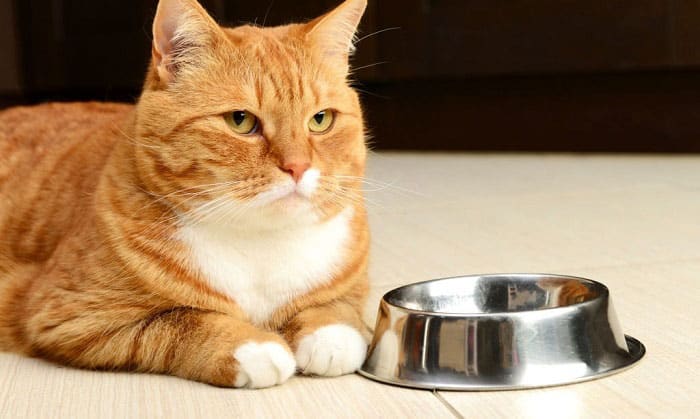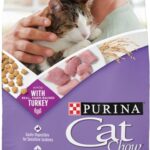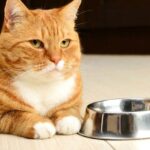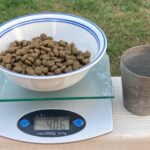Cats can survive without food for about two weeks, but only if they have access to water. Without water, they may only last three days.
Cats are remarkably resilient creatures with bodies adapted for efficiency, especially when food is scarce. While a cat’s survival time without food can vary due to factors such as its health and environment, it’s crucial for cat owners to understand their pet’s nutritional needs.
A cat’s health can deteriorate quickly if it stops eating, leading to potentially serious medical conditions. Early detection and intervention are key to ensuring a cat doesn’t suffer from prolonged lack of nutrition. Knowing your feline’s feeding habits can help you spot any unusual behavior that might indicate a problem requiring immediate attention. Regular meals, clean water, and occasional check-ups with a vet are essential for maintaining your cat’s health and well-being.
Feline Fasting Duration
The question of how long cats can survive without food is more than a query about feline behavior; it’s a serious health concern for any cat owner. Cats have evolved as hunters that do not eat every day, but domestication has changed their feeding routines and physiology. Understanding the balance between normal fasting and the point at which it becomes harmful is crucial. If you’re concerned about your cat’s eating habits, you’ve come to the right place. This section dives into the integral aspects of feline fasting duration and the risks that prolonged periods without food pose to our furry companions.
Understanding A Cat’s Survival Without Food
Cats are hardy creatures with a natural instinct to survive, yet this does not mean they should go without food. A healthy cat typically should not fast for more than 24-48 hours. Beyond this point, the absence of nutritional intake could lead to serious health issues. A cat’s body starts to utilize fat reserves for energy, but without food, their liver may become overwhelmed by fat, a condition known as hepatic lipidosis.
Assessing Health Risks Associated With Prolonged Fasting
The health risks following extended periods without food escalate quickly and can be life-threatening. When a cat stops eating, a cascade of metabolic events lead to detrimental health consequences. Key risks include:
- Dehydration – Essential body functions can become compromised.
- Hepatic lipidosis – A severe liver disease caused by the buildup of fats in the liver.
- Decreased immune function – Affects the cat’s ability to fight infections.
- Muscle wasting – The body consumes its own muscle tissue as a source of energy.
Timely intervention is critical to prevent lasting damage or fatality.
Spotting The Signs That Your Cat Needs Nutrition
It’s essential to notice signs indicating your cat requires immediate nutrition. Here is a non-exhaustive list of symptoms that should prompt a swift response:
| Sign | Description |
|---|---|
| Lethargy | Showing unusual tiredness or lack of energy. |
| Weight loss | Noticeable decrease in body weight. |
| Irritability | Changes in behavior such as increased irritability or aggression. |
| Gastrointestinal issues | Problems such as vomiting or diarrhea. |
| Physical weakness | Difficulty in standing or walking. |
Always consult a veterinarian if your cat’s eating behavior changes or if any of these signs emerge, especially if they’re coupled with an absence of food consumption. It’s important to address these symptoms promptly to safeguard your cat’s health.

Credit: www.amazon.com
Detecting Hunger Strikes In Cats
Cat owners know that felines can be finicky eaters. Understanding when a cat is on a hunger strike is crucial, as it can indicate underlying health issues or stress. Cats typically do not skip meals without reason, so it’s essential to be vigilant about any changes in their eating habits. In this section, we’ll explore how to recognize the signs of a hunger strike in cats and what steps you can take to monitor and resolve the issue.
Recognizing The Natural Eating Habits Of Felines
Before you can identify a hunger strike, you need to know what normal eating behavior looks like for cats. Most cats prefer to eat small meals frequently throughout the day and might nibble at their food rather than eat it all at once. Here are some characteristics of typical feline feeding patterns:
- Cats are obligate carnivores and crave a high-protein diet.
- Wild cats hunt and eat several small meals a day. Domestic cats mirror this by grazing.
- Providing fresh food at regular intervals aligns with their instinctual needs.
- Monitoring your cat’s typical meal times and portion sizes is key to identifying any deviations in behavior.
Identifying Changes In Behavior Indicating Hunger
Changes in your cat’s behavior can be the first sign that they’re not eating properly. Be on the lookout for the following cues:
- Sudden disinterest in food they usually enjoy.
- Excessive vocalization or restlessness around meal times.
- Excessive sleepiness or, conversely, hyperactivity.
- Lack of energy or less interest in play.
Any abrupt shift in your cat’s eating habits warrants closer observation and, potentially, a visit to the veterinarian.
How To Responsibly Monitor Your Cat’s Food Intake
Keeping track of what and when your cat eats is fundamental to preventing and identifying hunger strikes. Consider these guidelines for responsible monitoring:
| Method | Description |
|---|---|
| Meal Schedule | Set and maintain a consistent feeding schedule for your cat. |
| Portion Control | Measure out the right amount of food per serving to avoid overfeeding or underfeeding. |
| Observation | Watch your cat as they eat to assess appetite and enjoyment of their meals. |
| Health Check-Ups | Regular veterinary visits to rule out medical reasons for any changes in eating habits. |
Always ensure your cat has access to fresh water and be cautious with any changes in diet or feeding implements, as these can affect their desire to eat. Should your cat’s hunger strike persist beyond 24 hours, consult your vet promptly to safeguard their health.
Exploring ‘how Long Can Cats Go Without Food’
Understanding the limits of a cat’s ability to survive without food is critical for responsible pet owners. Cats are resilient creatures, but even they have limits to how long they can go without nourishment. Let’s break down the factors that play into their survival and the typical timeframes they can withstand.
Factors Influencing A Cat’s Resilience To Hunger
The duration a cat can survive without food depends on several factors. Each aspect contributes to its overall resilience to hunger:
- Body weight and fat reserves: Cats with higher body weight and more fat can often survive longer as they have more energy reserves.
- Hydration: Access to water is crucial, as dehydration can lead to serious health issues faster than starvation.
- Health status: Healthy cats may survive longer due to better overall body functions, while sick cats may succumb more quickly.
- Age: Younger and elderly cats generally have weaker resilience to food deprivation.
- Activity levels: Inactive cats use less energy and can sometimes survive longer without food.
Typical Timeframes For Food Deprivation Stress In Cats
While each cat’s ability to survive without food varies, here are some general timeframes:
| Duration without food | Potential impact |
|---|---|
| 24-48 hours | Minimal risk for healthy cats but a vet check is advisable. |
| 3-5 days | Increased risk of liver problems, especially for overweight cats. |
| Over 1 week | Severe health risks and potential for irreversible organ damage. |
It’s important to note that these are approximations and prompt veterinary attention is crucial if a cat stops eating.
Variations In Survival Without Food Among Different Breeds
Do different breeds have different survival rates when it comes to food deprivation? While research is limited, here are some considerations:
- Metabolism: Some breeds have faster metabolisms and may not fare as well without regular feeding.
- Muscle mass: Breeds with more muscle mass may deplete their energy reserves faster than those with less.
- Genetic predispositions: Certain breeds may be genetically predisposed to health issues that could affect their survival rate when food is scarce.
It remains essential to tailor care and nutrition to the individual needs of each breed to ensure their well-being in any situation.
Health Impacts From Extended Fasting
Cat owners often worry about their feline friend’s well-being, especially when appetite wanes or when they refuse food. Unlike humans, cats are not designed to go long periods without food. Understanding the health impacts of extended fasting in cats is crucial. When cats fast, not only do they lose weight, but their bodies also undergo a cascade of physical changes, some potentially irreversible and life-threatening. Grasping the severity of the issue helps ensure timely actions that could save a life.
Short-term Physical Effects Of Not Eating On Cats
Feline bodies react swiftly to a lack of food, with several short-term physical effects surfacing quickly. Due to their distinct metabolic needs, even a few days of not eating can be harmful.
- Dehydration: Without food, cats may reduce their water intake, leading to dehydration.
- Lethargy: Lack of energy is common as calories and nutrients wane.
- Weight Loss: Cats start to consume their fat reserves, resulting in rapid weight loss.
- Liver Stress: The liver struggles to convert fat to energy, a condition known as hepatic lipidosis.
Long-term Dangers Involving Organ Function And Failure
A continued absence of food intake can escalate to critical long-term health threats. The body’s attempt to function without necessary nutrients leads to severe health complications over time.
| Organ/System | Effect of Extended Fasting | Risk |
|---|---|---|
| Liver | Irreversible damage due to hepatic lipidosis | Liver failure |
| Heart | Inadequate nutrition affecting muscle function | Cardiomyopathy |
| Kidneys | Dehydration worsening renal health | Renal failure |
| Immune System | Weakens, leading to vulnerability to diseases | Increased risk of infections |
When To Seek Veterinary Intervention For A Cat’s Hunger
Immediate veterinary intervention becomes critical when a cat refuses food for more than 24 hours. The following signs necessitate a vet visit:
- Continuous vomiting or diarrhea.
- Signs of pain or discomfort.
- Unusual lethargy or reluctance to move.
- Any other abrupt changes in behavior or appearance.
Acting without delay can prevent further health deterioration, getting your cat the help needed to recover.
Nutritional Planning For Absent Feeding
When life throws a curveball, and pet owners must leave their feline friends unsupervised, understanding how long cats can survive without food becomes paramount. Crucial to a cat’s well-being, nutritional planning for absent feeding ensures that even in an owner’s absence, the cat remains nourished. Proper planning helps mitigate health risks associated with inadequate feeding. This segment of the blog post dives into strategies to safeguard your cat’s dietary needs when you’re away.
Designing A Contingency Feeding Schedule For Pet Owners
Crafting a contingency plan is vital for pet owners facing unexpected departures. This schedule should detail portion sizes, feeding times, and specific instructions for caregivers. An automated feeder can be a reliable ally in maintaining a consistent feeding routine, while entrusting a friend or hiring a pet sitter offers a more personal touch to mealtime.
- Automated feeders: Load with the right amount of food and set the timer accordingly.
- Written instructions: Clearly outline the feeding procedure for pet sitters.
- Emergency contacts: Provide numbers for immediate consultation if issues arise.
Choosing The Right Diet To Promote Quick Health Recovery
The diet you leave behind should foster rapid health recovery in case your cat has gone without food. Opt for highly nutritious, easily digestible foods that will replenish their energy reserves efficiently. Dry kibble, which can be left out for longer periods without spoiling, might seem convenient, but integrating wet food is vital for hydration and can stimulate appetite in a finicky feline.
| Type of Food | Benefits |
|---|---|
| Dry Food | Long-lasting, convenient for autonomous feeders. |
| Wet Food | Provides hydration, more appetizing to some cats. |
| Mixed Diet | Combines benefits of both, ensures nutritional variety. |
Vital Insights Into Ensuring Ongoing Nourishment For Your Cat
To guarantee ongoing nourishment for your cat in your absence, leave clear instructions on dietary restrictions and preferences to avoid gastrointestinal disturbances. Keep the feeding area clean to encourage your cat to eat and reduce the risk of foodborne illnesses. Consider leaving a supply of fresh water with a water fountain to encourage hydration.
Key points to remember for ongoing nourishment:
- Regularly check the food stock before leaving to ensure an ample supply.
- Monitor your cat’s health closely after your return.
- Keep all feeding equipment, like bowl and feeders clean to prevent bacteria.
- Arrange a backup plan should the primary caretaker becomes unavailable.
Frequently Asked Questions On How Long Can Cats Go Without Food
What Factors Affect A Cat’s Survival Without Food?
Cats’ survival without food depends on their health, age, and hydration levels. Healthy adult cats can survive for about two weeks without food, provided they have access to water. Weak, old, or sick cats may not last as long. Hydration is key for survival.
Can A Cat Survive Only On Water For Days?
Yes, cats can survive on just water for a short period. They can last up to two weeks with water but no food. However, this isn’t recommended, as it can lead to severe health issues, including liver failure known as hepatic lipidosis.
How Does A Cat’s Body Respond To Not Eating?
When a cat doesn’t eat, its body starts to use fat stores for energy, which can lead to hepatic lipidosis or fatty liver disease. This condition requires urgent veterinary care. Additionally, the cat’s immune system weakens, and organ function suffers.
What Are The Signs Of Starvation In Cats?
Signs of starvation in cats include lethargy, weight loss, and decreased muscle mass. The cat may also show a lack of interest in food or water, have a dull coat, and experience gastrointestinal issues such as constipation or diarrhea.
Conclusion
Caring for a cat’s health includes understanding their dietary needs. While felines can survive for some time without food, this isn’t ideal. Their well-being relies on regular nutrition. So, monitor your cat’s eating habits closely and consult a vet if their appetite wanes.
Remember, a nourished cat is a happy, healthy pet.






